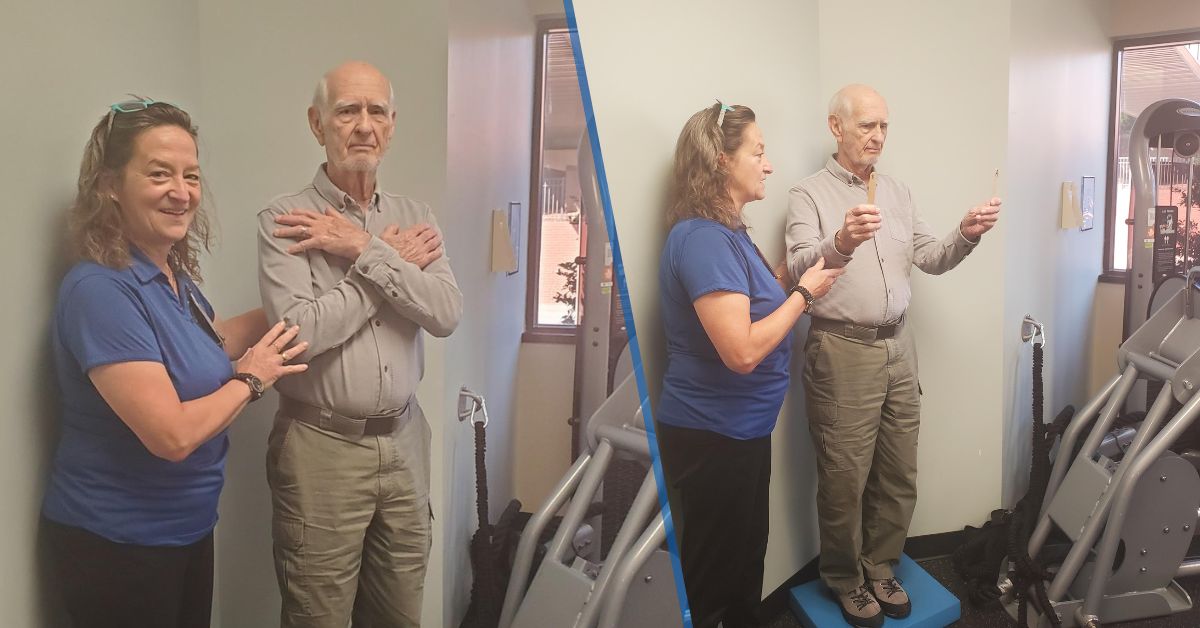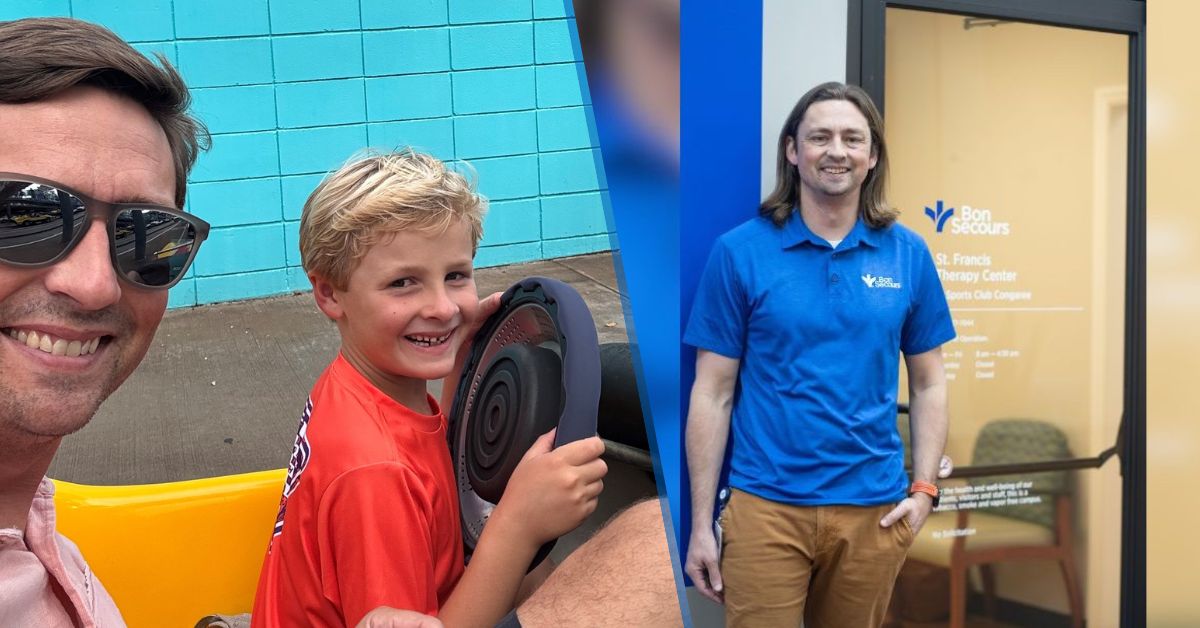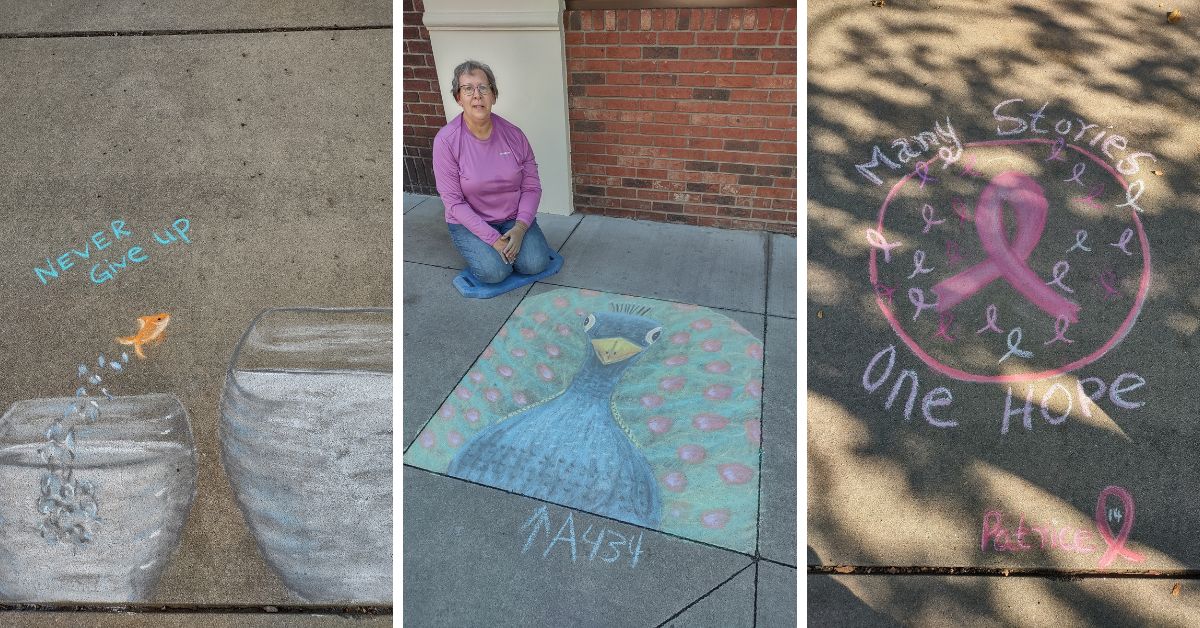About every 40 seconds, someone in America has a stroke – someone like Carla Whitlock.
“I had given a presentation at a local technical college and then continued to work, even went to lunch with a friend of mine,” the 45-year-old businesswoman recalls. “But afterwards, by about 3 o’clock, I started feeling a little odd. So, I tried walking to my friend’s office but by the time I got there, I’d lost sensation on my left side and was slurring speech. She immediately saw that something was wrong.”
Carla’s friend jumped into action and she was soon on her way to the hospital. By the time Carla arrived, she was feeling more like herself, which made the news that she’d had a stroke that much more of a surprise.
“It was quite the shock,” Carla shares. “I had no major health issues up to that point.”
Doctors told Carla she’d experienced a form of stroke called a transient ischemic attack (TIA), which involves a temporary blockage of blood flow to the brain.
“These are sometimes referred to as a ‘mini-stroke’ because the symptoms typically only last a few minutes, but it’s just as important that you seek medical attention right away,” John Porter, MD, a neurologist with Bon Secours Neurology, explains. “Too many people shrug it off thinking, ‘Oh, it went away so I’m fine,’ but the truth is a TIA is a huge red flag that things are not fine. This is your body’s way of warning you to take action before it’s too late.”
Carla says while her symptoms were temporary, they were severe enough that she wouldn’t have ignored them. However, learning this did make her think back to another previous incident.
“Two to three years before my TIA, I’d gone to speak at a conference where I started to develop a really bad headache one morning,” she shares. “I thought maybe I just needed some coffee or food. However, headaches aren’t something I have often, and I was having trouble articulating my words a bit. I just brushed it off thinking I needed some more sleep and kept rolling right along. But looking back, maybe that could have been something.”
Working with the doctors at Bon Secours, Carla discovered she’d had high blood pressure for an extended amount of time. While she wasn’t aware of the problem, she admits to being under tremendous amounts of stress in the months leading up to her TIA. She had a loop recorder implanted to monitor her heart, now takes medication and has worked with her doctors to better manage her stress. She also has one more takeaway that she hopes will benefit others.
“I had not had a primary care provider for more than 10 years,” Carla admits. “I saw my gynecologist and a dermatologist, but not a primary care provider until after this incident. I was young, active, didn’t smoke or drink so this was quite a shock. If I had to talk to people about lessons learned, I cannot stress enough the importance of seeing a primary care provider and getting blood work done regularly.”
Carla isn’t just advocating for primary care. She’s also joined the Bon Secours Cerebrovascular and Stroke Advisory Council. It was formed in 2018 to help improve Upstate stroke care.
“It’s a great avenue to promote the work Bon Secours is doing in heart and stroke health,” she says. “My background lends itself to helping the council with fundraising and the planning of events. It also allows me to share my story – as I didn’t fit the typical profile of a stroke patient and stories like mine need to be publicized. So many people – whatever their demographic – fail to seek care.”
That may be one reason stroke is a leading cause of death and disability. The stroke council brings together medical experts, stroke patients and community members to discuss ways to increase awareness and stroke education as well as improve patient experiences and outcomes.
“Every second counts, because millions of brain cells immediately begin to die when a stroke occurs,” Dr. Porter adds. “How soon you’re able to get treatment can mean the difference between a full recovery and permanent disability or even death.”
If you think you or someone is experiencing stroke symptoms, remember to BE FAST:
- Balance – Is the person dizzy? Can they walk?
- Eyes – Can the person see? Is their vision blurry?
- Face – Can they smile? Is one side of their face sagging?
- Arm – Are their arms moving normally? Is one arm weaker or numb?
- Speech – Is it slurred or strange when asked to say simple phrases?
- Time to Call 911 – Don’t waste time getting help, and do not try to drive yourself.
If you’d like to get involved with the Stroke Council, you can contact the Neuroscience Program Coordinator, Casey Smith at Casey_Smith@bshsi.org or by calling 864-255-1040.
Also, learn more about the stroke care services we offer at Bon Secours.





